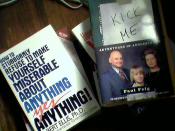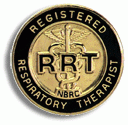Client Centered Therapy
"Client-Centered Therapy (CCT) was developed by Carl Rogers in the 40's and 50's. It is a non-directive approach to therapy, "directive" meaning any therapist behavior that deliberately steers the client in some way. Directive behaviors include asking questions, offering treatments, and making interpretations and diagnoses. Virtually all forms of therapy practiced in the US are directive." (http://world.std.com/~mbr2/cct.html)
The most important part of this type of therapy is trust. In order for the therapy to work the therapist must gain the respect and trust of the client. If he or she does not the client will not get the best treatment which he or she deserves. Another big player in this therapy is Albert Ellis. Ellis and Rogers when compared to each other by audio tapes only had one thing in common which was Self-confidence. Although Ellis has a big part in REBT he has also had a big effect on client or person centered approach.
Ellis also came up with the ABC's method or approach. The diagram below shows what the ABC approach looks at.:
Adversity: Lee fails an important test.
Belief: Lee's self-talk is: "I'm really stupid; I'll never do well in school."
Consequence: Lee gets discouraged, doesn't bother studying, and fails the next test.
The A stands for the problem or event that the person is trying to fix or make better, B stands for the persons Beliefs, and values, and C stands for the consequence or out come. But in Ellis's diagram a client can not go right to the out come because he or she's values and beliefs might go against the course of action to get there. A big factor in this are called the four horsemen:
1. Emotional demanding "Should be the way I want"
2. Low Frustration Tolerance "Placing...


